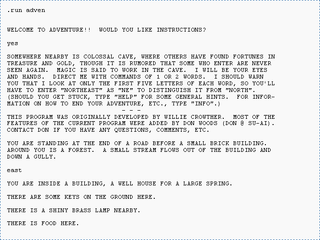
Interactive fiction, often abbreviated IF, is software simulating environments in which players use text commands to control characters and influence the environment. Works in this form can be understood as literary narratives, either in the form of interactive narratives or interactive narrations. These works can also be understood as a form of video game, either in the form of an adventure game or role-playing game. In common usage, the term refers to text adventures, a type of adventure game where the entire interface can be "text-only", however, graphic text adventures still fall under the text adventure category if the main way to interact with the game is by typing text. Some users of the term distinguish between interactive fiction, known as "Puzzle-free", that focuses on narrative, and "text adventures" that focus on puzzles.

Pool of Radiance is a role-playing video game developed and published by Strategic Simulations, Inc (SSI) in 1988. It was the first adaptation of TSR's Advanced Dungeons & Dragons (AD&D) fantasy role-playing game for home computers, becoming the first episode in a four-part series of D&D computer adventure games. The other games in the "Gold Box" series used the game engine pioneered in Pool of Radiance, as did later D&D titles such as the Neverwinter Nights online game. Pool of Radiance takes place in the Forgotten Realms fantasy setting, with the action centered in and around the port city of Phlan.

FTL Games was the video game development division of Software Heaven Inc. FTL created several popular video games in the 1980s. Despite the company's small size, FTL products were consistently number-one sellers and received the highest critical acclaim and industry awards.
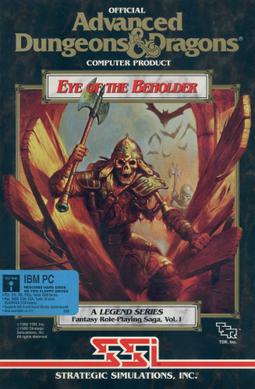
Eye of the Beholder is a role-playing video game for personal computers and video game consoles developed by Westwood Associates. It was published by Strategic Simulations, Inc. in 1991, for the MS-DOS operating system and later ported to the Amiga, the Sega CD and the SNES. The Sega CD version features a soundtrack composed by Yuzo Koshiro and Motohiro Kawashima. A port to the Atari Lynx handheld was developed by NuFX in 1993, but was not released. In 2002, an adaptation of the same name was developed by Pronto Games for the Game Boy Advance.

Leather Goddesses of Phobos is an interactive fiction video game written by Steve Meretzky and published by Infocom in 1986. It was released for the Amiga, Amstrad CPC, Amstrad PCW, Apple II, Macintosh, Atari 8-bit family, Atari ST, Commodore 64, TI-99/4A and MS-DOS. The game was Infocom's first "sex farce", including selectable gender and "naughtiness"—the latter ranging from "tame" to "lewd". It was one of five top-selling Infocom titles to be re-released in Solid Gold versions. It was Infocom's twenty-first game.
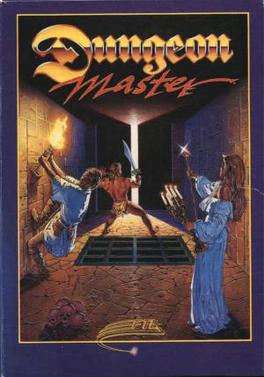
Dungeon Master is a role-playing video game featuring a pseudo-3D first-person perspective. It was developed and published by FTL Games for the Atari ST in 1987, almost identical Amiga and PC (DOS) ports following in 1988 and 1992.

Might and Magic Book One: The Secret of the Inner Sanctum is an early role-playing video game, first in the popular and influential Might and Magic franchise. It was released in 1986 as New World Computing's debut, ported to numerous platforms and re-released continuously through the early 1990s.
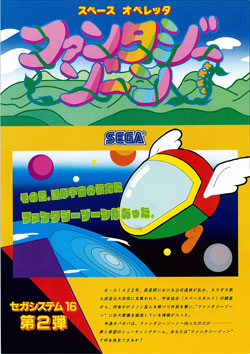
Fantasy Zone is a 1986 arcade game by Sega, and the first game in the Fantasy Zone series. It was later ported to a wide variety of consoles, including the Master System. The player controls a sentient spaceship named Opa-Opa who fights an enemy invasion in the titular group of planets. The game contains a number of features atypical of the traditional scrolling shooter. The main character, Opa-Opa, is sometimes referred to as Sega's first mascot character.

Beyond Zork is an interactive fiction computer game written by Brian Moriarty and released by Infocom in 1987. It was one of the last games in the Zork series developed by Infocom. It signified a notable departure from the standard format of Infocom's earlier games which relied purely on text and puzzle-solving: among other features, Beyond Zork incorporated a crude on-screen map, the use of character statistics and levels, and RPG combat elements.
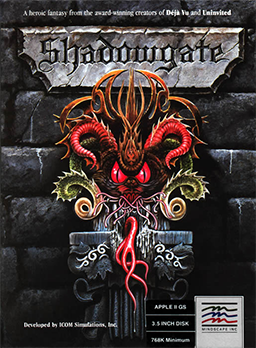
Shadowgate is a black-and-white 1987 point-and-click adventure video game originally for the Apple Macintosh in the MacVenture series. The game is named for its setting, Castle Shadowgate, residence of the evil Warlock Lord. The player, as the "last of a great line of hero-kings" is charged with the task of saving the world by defeating the Warlock Lord, who is attempting to summon up the demon Behemoth out of Hell. Later that year, a color version of the game was released for the Amiga and Atari ST, and in 1989 for the Nintendo Entertainment System.

Moonmist is an interactive fiction computer game written by Stu Galley and Jim Lawrence and published by Infocom in 1986. The game was released simultaneously for the Amiga, Amstrad CPC, Apple II, Atari 8-bit family, Atari ST, Commodore 64, MS-DOS, TRS-80, TI-99/4A, and Macintosh. It is Infocom's twenty-second game. Moonmist was re-released in Infocom's 1995 compilation The Mystery Collection, as well as the 1996 compilation Classic Text Adventure Masterpieces.

The Pawn is an interactive fiction game for the Sinclair QL written by Rob Steggles of Magnetic Scrolls and published by Sinclair Research in 1985. In 1986, graphics were added and the game was released for additional home computers by Rainbird.

Wizardry: Proving Grounds of the Mad Overlord is the first game in the Wizardry series of role-playing video games. It was developed by Andrew Greenberg and Robert Woodhead. In 1980, Norman Sirotek formed Sir-Tech Software, Inc. and launched a beta version of the product at the 1980 Boston Computer Convention. The final version of the game was released in 1981.

Realmz is a fantasy adventure and role-playing video game first developed and published by Fantasoft in 1994 for the Apple Macintosh as shareware. Fantasoft released a Microsoft Windows-compatible version in 1999, and a science fiction role-playing game based on the Realmz engine, titled New Centurions, in 2001. Realmz was originally written by Tim Phillips on a Macintosh IIsi; he also wrote four game scenarios, including the introductory scenario "City of Bywater". Other original scenario contributors were Jim Foley and Sean Sayrs.
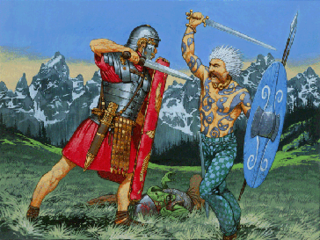
Nethergate is a computer-based historical fantasy role-playing game published by Spiderweb Software for the Macintosh and Microsoft Windows platforms. The game was released in 1998 by Jeff Vogel, and was Spiderweb Software's first game to feature a 45° isometric viewing angle. Nethergate offers players the choice to play on either side of the story, as Celts or Romans. The game's plot allows for several endings and many side quests, which accompany the main story. Spiderweb Software released a remake called Nethergate Resurrection in May 2007.

Space Quest: Chapter I – The Sarien Encounter, commonly known as Space Quest I, is a graphic adventure game released in October 1986 by Sierra On-Line. It is the first game in the Space Quest series. It quickly became a hit, selling in excess of 100,000 copies. Total sales are believed to be around 200,000 to date, not including the many compilations it has been included in.

Moebius: The Orb of Celestial Harmony is a video game produced by Origin Systems and designed by Greg Malone. It was originally released in 1985 for the Apple II. Versions were also released for the Amiga, Atari ST, Commodore 64, Macintosh, and MS-DOS. The game is primarily a top-down view tile-based role-playing video game, but it has action-based combat sequences which use a side view, roughly similar to games such as Karateka.

Dream Zone is an adventure video game developed by JAM Software and published by Baudville. The game was released in 1988 for the Apple IIGS and then ported to the MS-DOS, Amiga, and Atari ST.

The Computer Edition of Scrabble is a computer game developed by Leisure Genius for the Macintosh in 1988, and was an official computerized version of the board game Scrabble.
Pool of Radiance is a series of role-playing video games set in the Forgotten Realms campaign settings of Dungeons & Dragons; it was the first Dungeons & Dragons video game series to be based on the Advanced Dungeons & Dragons rules.


















